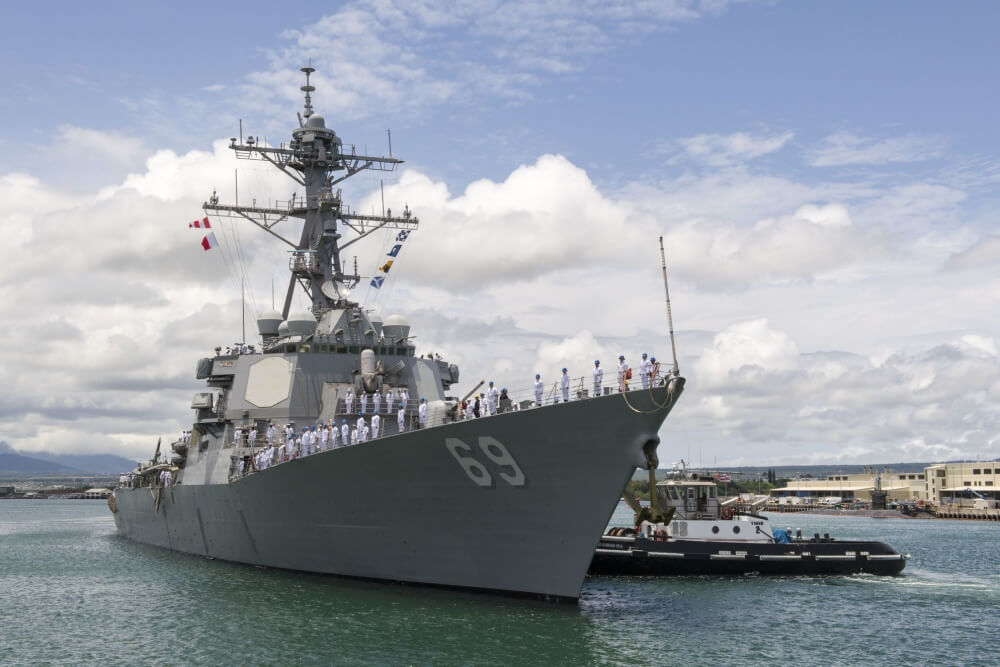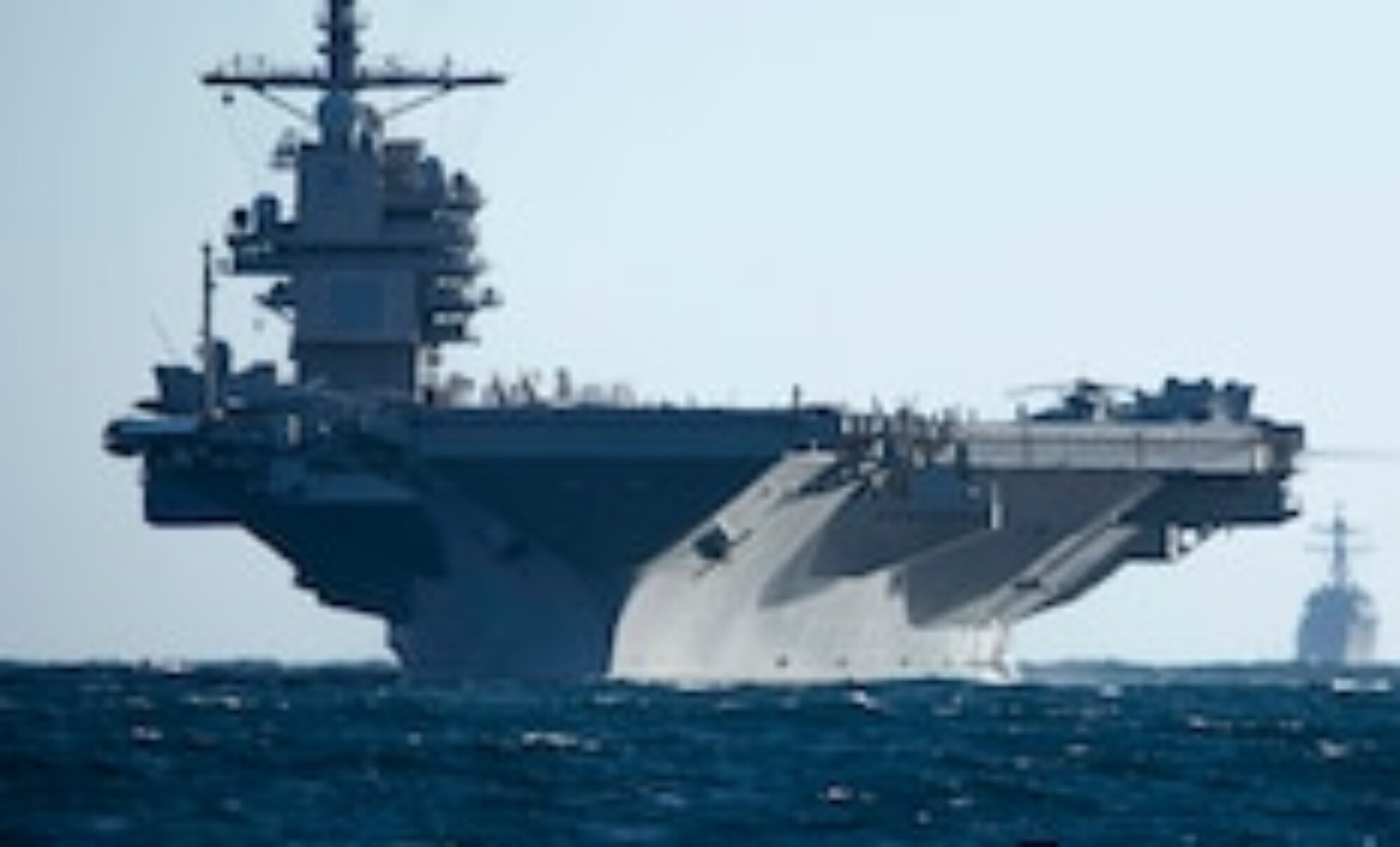
The US Navy conducted a freedom of navigation operation in the disputed waters around the Paracel Islands, which are claimed by both China and Vietnam. The operation was carried out by the guided-missile destroyer USS Milius, which sailed within 12 nautical miles of the islands to challenge China’s maritime claims in the region according to press reports.
AP reported that China threatened “serious consequences” Friday after the United States Navy sailed a destroyer around the disputed Paracel Islands in the South China Sea for the second day in a row, in a move Beijing claimed was a violation of its sovereignty and security.
In response to the operation, US Navy spokesperson Lt. j.g. Luka Bakic stated, “The United States conducts routine and regular freedom of navigation operations, as we have done in the past and will continue to do so in the future. These operations are designed to uphold the rights, freedoms, and lawful uses of the sea and airspace guaranteed to all nations under international law.”
China has claimed almost the entire South China Sea as its own, a claim that is disputed by other countries, including the Philippines, Vietnam, Malaysia, Brunei, and Taiwan. The US has been conducting freedom of navigation operations in the region to challenge China’s excessive claims and assert its right to sail through what it sees as international waters.
The operation comes amid tensions between the US and China over a range of issues, including trade, human rights, and the origins of the Covid-19 pandemic. China has accused the US of “provocation” and “interference” in the region, while the US has said it will continue to challenge what it sees as China’s excessive claims in the South China Sea.
In a report from PBS, the U.S. has no South China Sea claims itself, but has deployed Naval and Air Force assets for decades to patrol the strategic waterway, through which around $5 trillion in global trade transits each year and which holds highly valuable fish stocks and undersea mineral resources.
A United Nations-backed arbitration tribunal ruled in 2016 that the historical claim from China on the waters had no legal basis under the 1982 United Nations Convention on the Law of the Seas, and Washington maintains that freedom of navigation and overflight of the waterway are in the American national interest.
U.S. forces currently operate daily in the South China Sea, and have been present for more than a century. China regularly responds angrily, accusing the U.S. of meddling in Asian affairs and impinging upon its sovereignty.
China’s claims have frequently brought it into conflict with other nations in the region as well. Filipino diplomats unleashed a slew of protests Friday over China’s recent targeting of a Philippine coast guard ship with a powerful military laser and other aggressive behavior.
.In 2018, CNN also reported on the Paracel Islands, a group of islands in the South China Sea that are claimed by both China and Vietnam. The islands have long been a source of tension between the two countries, with China asserting its sovereignty over the region and Vietnam claiming that the islands are part of its territory. This conflict has escalated in recent years, with China building military facilities on some of the islands and Vietnam protesting these actions.
The Paracel Islands are a group of around 130 small islands, reefs, and atolls that are located in the South China Sea, approximately equidistant from the coasts of Vietnam and China. The islands are located in an area that is rich in natural resources, including oil, gas, and fish, which has made them a source of contention between the two countries. Both China and Vietnam claim historical rights to the islands, with China pointing to records dating back to the Han Dynasty and Vietnam citing evidence of its control of the islands during the 18th and 19th centuries.
Despite the competing claims, China has taken steps to assert its sovereignty over the Paracel Islands in recent years. China has built military installations on several of the islands, including airstrips, radar systems, and naval bases. This has led to concerns among Vietnam and other countries in the region that China is seeking to establish de facto control over the South China Sea.
Vietnam has responded to China’s actions by protesting its sovereignty over the islands and conducting its own military exercises in the region. In 2016, Vietnam’s prime minister called for a peaceful resolution to the dispute, stating that “Vietnam will resolutely and persistently protect its sovereignty and legitimate rights and interests in the East Sea [South China Sea].”
The Paracel Islands dispute is just one of several territorial disputes in the South China Sea, which has become a key flashpoint in the region. China’s claims to the islands are part of a larger effort to assert its dominance over the region, which has led to tensions with other countries in the region, including the Philippines, Malaysia, and Brunei.
The dispute over the Paracel Islands is likely to continue in the coming years, as both China and Vietnam remain committed to their competing claims to the region. The United States and other countries in the region have called for a peaceful resolution to the dispute, but it remains to be seen whether this will be possible given the complex geopolitical factors at play.
In conclusion, the Paracel Islands dispute is a complex and contentious issue that has significant implications for the region. While China has taken steps to assert its sovereignty over the islands, Vietnam and other countries in the region have expressed concern over China’s actions. The dispute is likely to continue for the foreseeable future, as both China and Vietnam remain committed to their claims to the region

